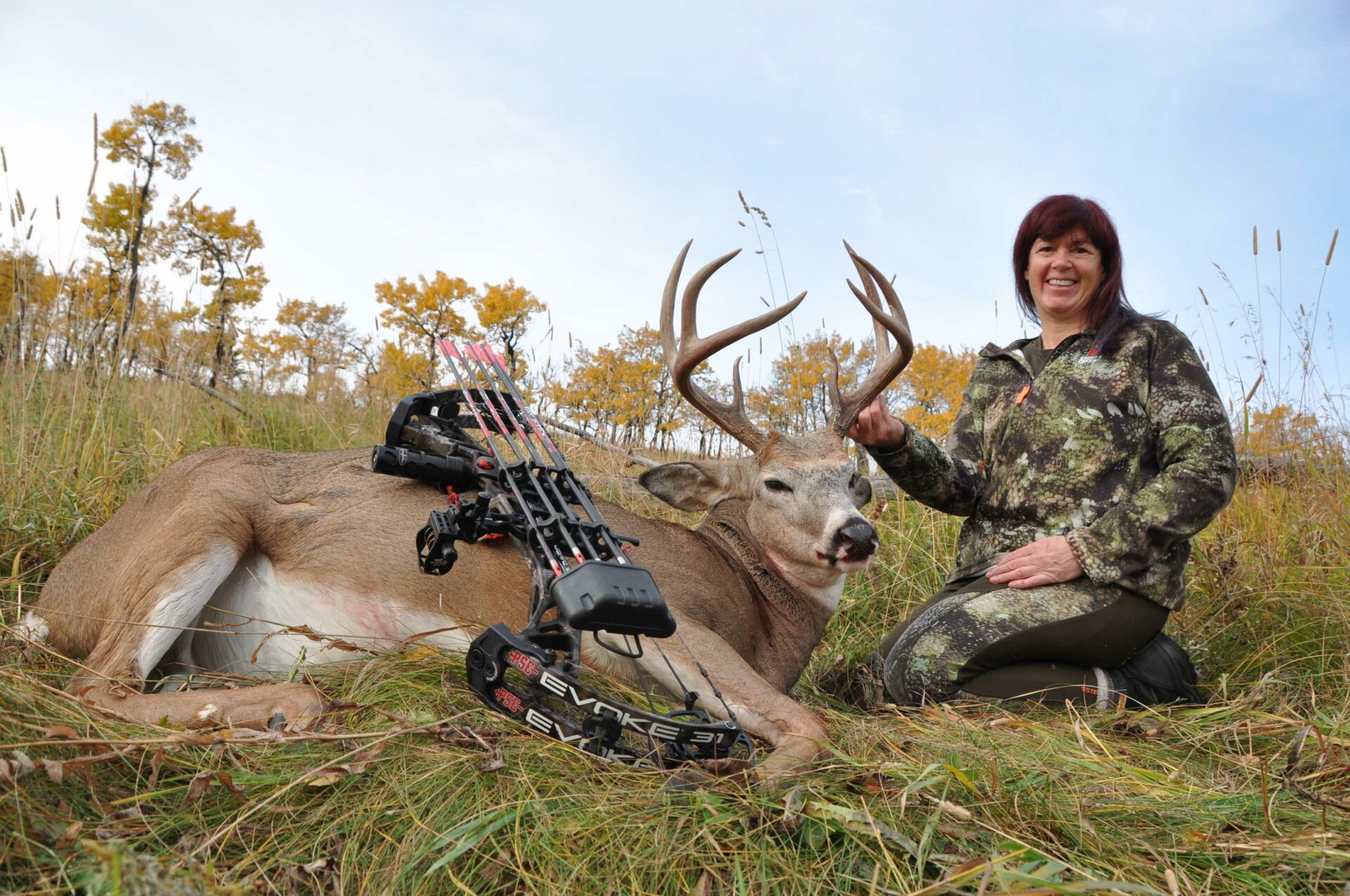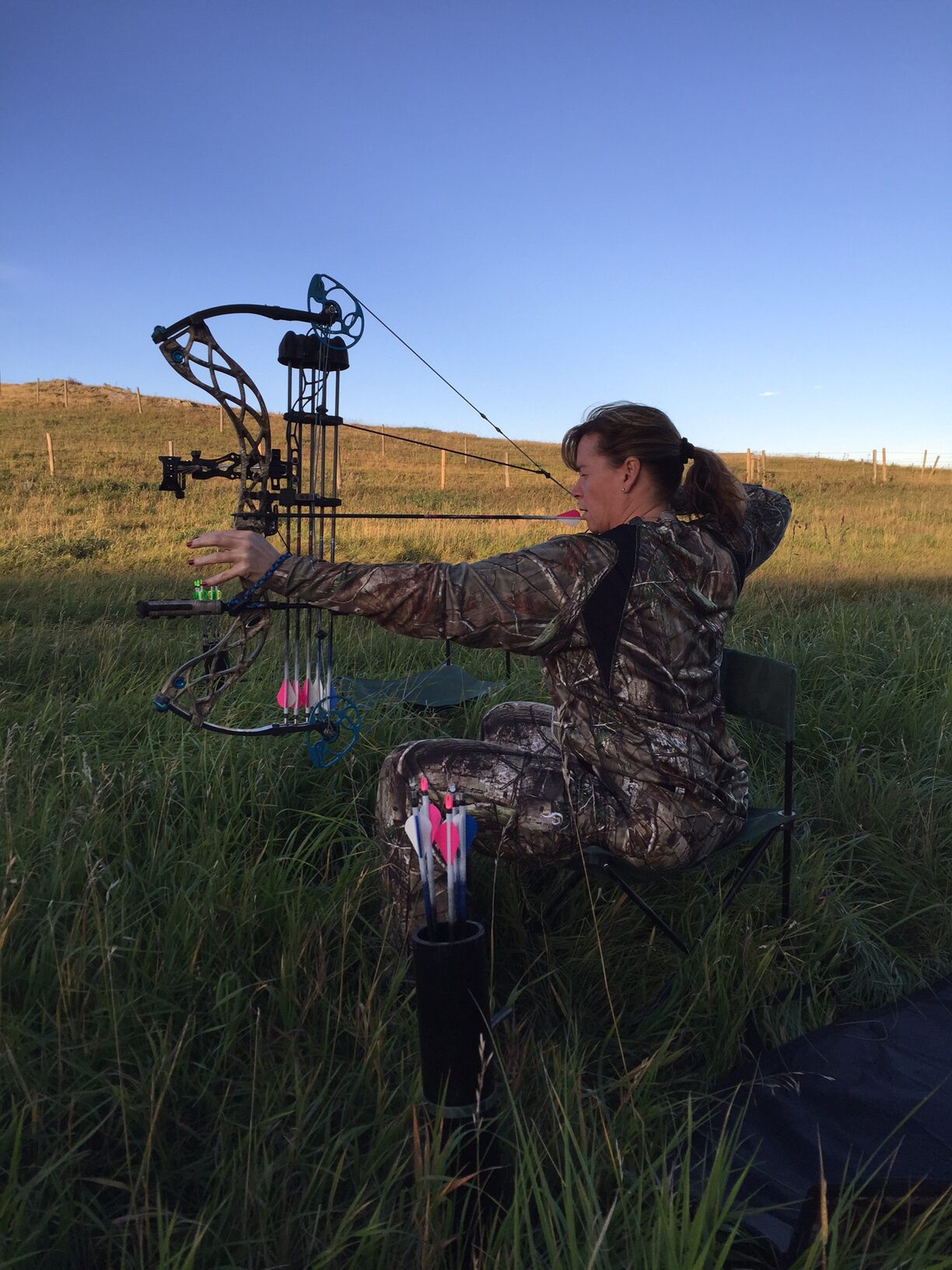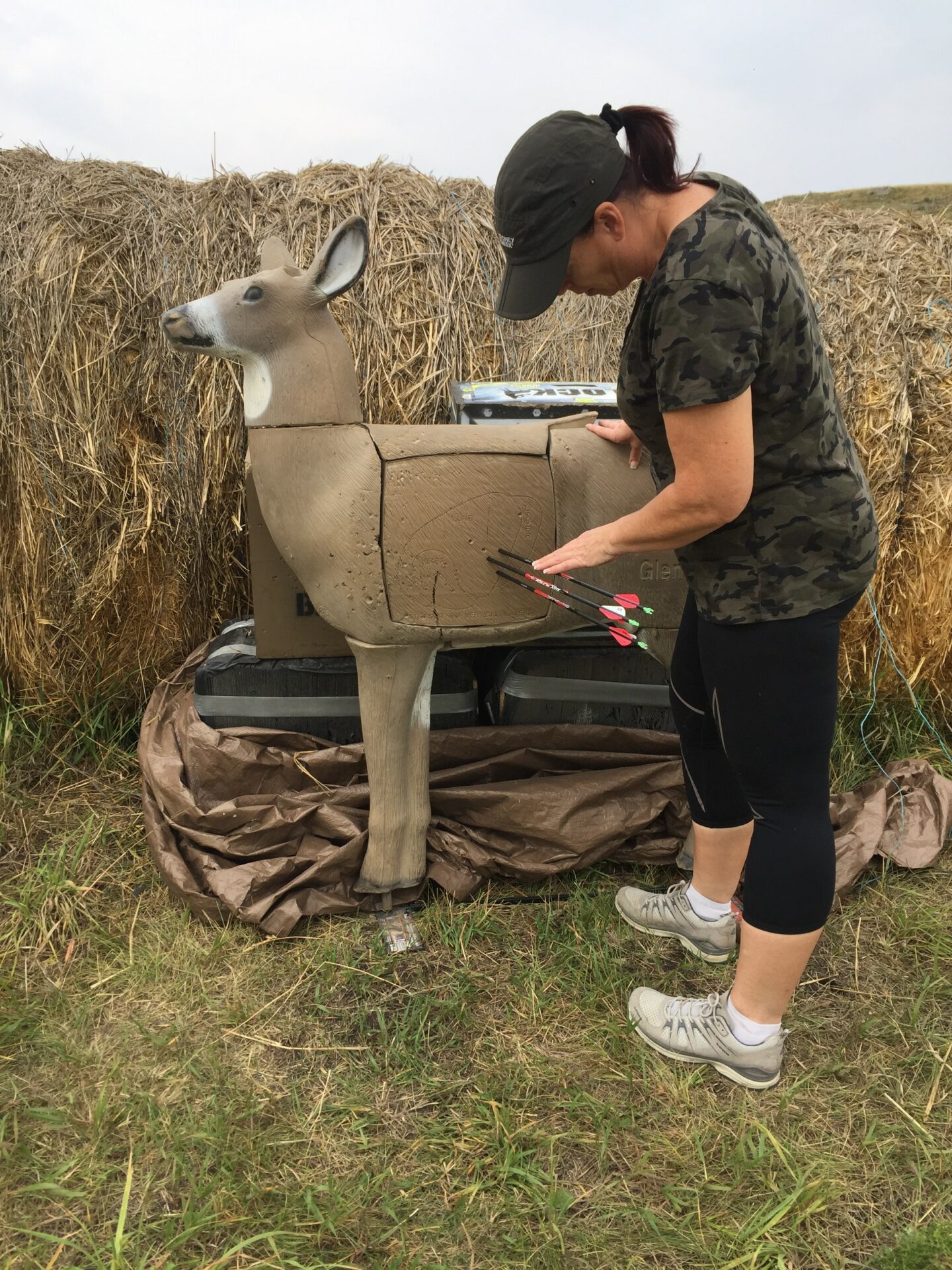Bow hunting is exhilarating. It challenges you to get within yards of the animal without being detected. Being so near that you see an animal’s breath and watch every twitch of a whisker is addicting. To hear the elk bugle so close that the hair on the back of your neck stands up is something never forgotten. To have the skill required to get that close and quietly draw your bow back and let that arrow fly is what is so addicting about bow hunting. It’s often as if time stands still, even if just for a moment.
Advertisement
In this article, I will detail what you need to know to get started in bow hunting. It isn’t something you start the week before the season opens. It takes a lot of careful planning and practice.

Selecting A Bow
First and foremost, make sure to read the regulations to find out the minimum gear requirements, what species are huntable with a bow and the seasons.
Advertisement
The 2020 – 2022 BC Hunting & Trapping Regulations state: Bow D (Longbow, Recurve, Compound) – Must have pull of no less than 18 kilograms (40 pounds) within the archer’s draw length. For big game, must have an arrow with a broadhead at least 2.2 centimetres (7/8 inch) at the widest point. Found at: https://www2.gov.bc.ca/assets/gov/sports-recreation-arts-and-culture/outdoor-recreation/fishing-and-hunting/hunting/regulations/2020-2022/hunting-trapping-synopsis-2020-2022.pdf
Compound bows: This is the style of bow most new archers begin with. Through a system of cams, they allow you to hold more weight at full draw; often 80 to 90 per cent less than the actual draw weight. This permits you more time to aim accurately and also allows you to hold at full draw for several minutes, while you wait for an animal to provide a shot. Prices range from a few hundred dollars to well over $1,000; but even in the lower-end bows, the amount of technology that goes into them far belies the price tag. Not long ago, you needed heavy draw weights to hunt bigger game animals, but now compound bows are so fast and efficient that many archers that used to shoot 70 to 80-pound bows are going back to 50 to 60-pound bows and getting similar performance. I would suggest becoming proficient with a lower draw weight bow to begin with. The great thing about compound bows is they permit people of nearly all stature and strengths to be able to hunt efficiently.
Advertisement
Recurve and longbows: Often, more experienced bow hunters will move to recurve or longbows to increase the challenge of the hunt. There is no mechanical advantage with these styles of bows, and you are required to pull and hold the exact same weight at full draw. Arrow speed is far less as well, so if you want to hunt larger game, draw weight must increase accordingly and effective range is greatly diminished. Successful traditional bow hunters are, without question, some of the most skilled in the field.
When you decide to buy your first bow or even upgrade a current model, my advice is to head to a reputable archery shop and look at a variety of models to what fits best and will be most suitable for your needs. Have the archery shop set up your bow as well. They will assist in determining the best draw weight and draw length and they will ensure all your accessories are properly mounted.
Bow Accessories
While getting the proper bow is critical, so too is getting accessories that will best suit your style of hunting.
Sights: While longbow and recurve shooters shoot without the use of a sight, they are a must on compound bows. There are several different types of sights, but those most commonly used for hunting are single, crosshair and multipin. For new bow hunters, the multipin is the simplest. They typically have anywhere from three to seven different pins that are set for individual yardages. I use a five-pin sight, with my pins set at 10-yard increments from 20 to 60 yards. For the novice bow hunter, a three pin is more than adequate. I would suggest setting them at 20, 30 and 40 yards.
Rests: You will also need an arrow rest on your compound bow. Rests hold the arrow in place when it is on the string and stabilize it as it is being released. There are several arrow rests to choose from, with the two most common types being the drop away and shoot through (whisker biscuit). Once you start shooting for more precision or are using an extremely fast bow, the drop aways are definitely the most adjustable; but for the average hunter, the shoot through is more than adequate. Many very experienced hunters I know still use this style of rest. They are simple in design and there is virtually nothing to malfunction, but they do lack adjustability. I personally shoot a drop away, but for just starting up, the shoot through is a great economical choice.
Arrows: There are four types of arrows typically used by hunters. Carbon arrows are by far the most common for compound users, but the new carbon/aluminum hybrid is gaining in popularity, especially with those shooting longer ranges. At one time, aluminum was the king of arrows, but you rarely see them used today other than by recurve shooters. Wood was the first arrow material and you still find longbow shooters using these. For the average bow hunter, carbon is the best option. They are affordable and quite durable. It’s important that you not only get the right length arrows, but also the correct spine. Each manufacturer will have a chart to determine proper spine based on draw length and draw weight. Spine is a measure of flex in the arrow and it’s important that it not over or under flex upon release for both safety and accuracy.
Carbon arrows are also offered in several diameters, with each having advantages and disadvantages; but for those just starting out, I’d stick with something in the .29 to .31-inch range. These larger diameter arrows are easier to tune and extremely durable.
Broadheads: There are three popular types of broadheads: cut-on-contact, chisel point and expandable and the debate will never end to which is best. Cut-on-contact have a cutting edge that extends right to the tip of the broadhead and, as the name implies, they begin cutting the moment the broadhead contacts the skin. They are a great choice for heavier-skinned game especially. Chisel-point broadheads have a chisel-like tip, with the cutting blades sitting behind the tip. These broadheads are noted for the durability, especially when hitting bone. Expandable broadheads are the newest technology out there. They are extremely low profile, and they fly virtually identical to a field point. This is a real bonus for practicing, and they require little tuning. The other two broadhead styles can require considerable tuning to get them to fly true and they may never have the same point of impact as your field points. Upon contact, the blades on the exapandables expand and deliver large wound channels. However, since there are working components to these broadheads, there is a chance that something could go wrong, such as the blades failing to deploy. I’ve been using expandables exclusively for years without issue, just for their simplicity in tuning, but all styles work well once tuned. Broadheads in the 100 to 125-grain range are the most common hunting choices.
Releases: At one time, the shooter’s three middle fingers were used to draw the bow, but most compound users utilize a mechanical release these days. These ensure a much more consistent draw and release. By far the most used by hunters is the index finger release with a wrist strap. For the rifle hunter converting to bow hunting, it’s an easy conversion as the trigger is pulled much like that on a rifle and the wrist strap ensures it’s always handy. This type of release requires the installation of a “D” loop and peep on your string.
Other accessories you will require are a stabilizer, quiver and rangefinder.
Archery Lessons
A good archery shop will also have qualified instructors on hand and taking a few lessons will save you a lot of future grief. If there’s one thing I’ve learned over the years, it’s that it’s much easier to learn to do something right in the first place than to try and unlearn bad habits. Even as an experienced shooter, I find it beneficial to spend some time with a pro a couple times a year just to catch those small bad habits I’ve picked up.

Practice, Practice, Practice
You will likely only get one shot at your game, so it is critical to practice. A lot. In order to become proficient and to keep your muscles in shape, practice as often as possible.
Go through the same steps every time you practice. Eventually those steps will become second nature, which will greatly assist in your hunting. Start out with either a paper or foam target to get your bow properly sighted in and to get familiar with it; but once you are, 3D targets are your best method of training. One thing you will quickly learn is that live animals don’t have a red dot where to aim, so it’s critical to shoot 3D targets of the animals you will be hunting.
Practice all styles of bow hunting, whether it’s from a ground blind, tree stand or walk and stalk. If you are hunting from a ground blind, then set up a ground blind and practice from all directions and all times of day. You will be surprised how the light will affect how well you can see your pins and the target. We learned this lesson the hard way in Africa. Shooting from the sitting position can also change the way you hold your bow and result in a vastly different point of impact. Even having a heavier coat on can change the way you anchor your string. You need to practice with all variables.
Practicing from a tree stand teaches you where to aim to ensure you hit the vitals from the steep angle, plus it makes you practice drawing and releasing quietly. When I hunt cougars, I hoist a target about 20 yards up a tree and shoot from below as I would with a treed cat. You will learn very quickly that you need to bend from the waist in order to take this shot. You also need to practice quartering to and quartering away shots from all scenarios to ensure you know where to place the pin to ensure proper arrow placement.
The distance game is another great way to practice. Have a partner point you in a direction and then start walking until they say stop. Range the spot and then figure out which angle will ensure the kill shot. This is a really good way to learn distances and angles.

Heading Into The Field
Bow hunting is different from rifle hunting in that you need the animals at a much closer range and not alert them to your presence. It’s important to hunt in ways that maximize your odds, whether that be sitting in a stand or blind or trying to call the animal to you. The biggest mistake that many rifle hunters make when they first pick up a bow is to hunt in the same manner as they did with the rifle. You will fail doing this. You need to learn to be a bow hunter.
